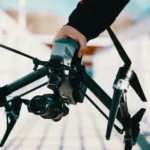
In the world of visual storytelling, aerial video has emerged as a powerful tool, offering storytellers a unique perspective from the skies.
Whether capturing breathtaking landscapes or adding a new dimension to narratives, aerial video storytelling has the potential to elevate your storytelling game.
This article delves into the art of crafting compelling narratives from above, exploring the techniques and considerations that make aerial storytelling an immersive and captivating experience.
Choosing the Right Setting
The choice of location plays a pivotal role in aerial storytelling. Select settings that complement and enhance the narrative.
Whether it’s an urban landscape, a natural wonder, or a historical site, each location contributes to the visual and emotional impact of the story.
Establishing a Visual Theme
Aerial shots can serve as a visual theme that ties the narrative together. Consider recurring aerial sequences that symbolize key elements of the story.
These thematic shots not only add coherence but also provide a visual signature that resonates with the audience.
Showcasing Scale and Perspective
Leverage the unique perspective offered by aerial videography to showcase scale and perspective. Use wide shots to establish context and close-ups to highlight details.
The juxtaposition of sweeping aerial views with intimate ground-level moments creates a dynamic visual experience.
Dynamic Camera Movements
Aerial storytelling benefits from dynamic camera movements that mirror the ebb and flow of the narrative.
Experiment with smooth pans, tilts, and tracking shots to guide the viewer through the story. Each movement should contribute to the overall emotional tone and pacing.
Transitioning Between Levels
Seamlessly transition between aerial and ground-level shots to provide a comprehensive view of the story.
Use drone footage to introduce locations and settings, then transition to traditional cameras for closer, more intimate moments. This blending of perspectives enhances the storytelling depth.
Time-of-Day Dynamics
The time of day can significantly impact the mood of your story. Experiment with different lighting conditions, especially during the golden hour, to add warmth and depth to your visuals.
The changing light can symbolize transitions within the narrative or evoke specific emotions.
Integrating Soundscapes
Sound is a crucial element of storytelling, and aerial videography allows for unique audio experiences. I
ncorporate ambient sounds captured during flights, or use music and narration to enhance the emotional resonance of the story. The audio elements should complement the visual narrative seamlessly.
Crafting a Journey
Aerial video storytelling often involves taking the audience on a journey. Whether it’s a physical journey across landscapes or an emotional journey through a storyline, use the expansive views and dynamic movements to create a sense of progression and discovery.
Conclusion
Aerial video storytelling is a cinematic art that empowers storytellers to transcend traditional boundaries and create immersive narratives.
By carefully selecting settings, establishing visual themes, and employing dynamic camera movements, you can craft stories that unfold not just horizontally but vertically, capturing the imagination and emotions of your audience from new heights.
Embrace the possibilities of aerial storytelling, where every frame is a canvas and every flight is a chapter in the visual narrative.








